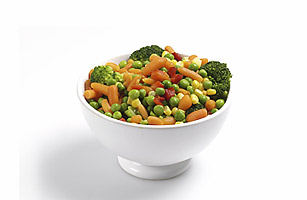
If you really want to go green, the conventional thinking goes, buy a hybrid. Practically speaking though, there is a faster and cheaper option: shift to a low-carbon diet. The meal plan of the average American family accounts for 2.8 tons of CO2 emitted annually, compared with 2.2 tons for driving. Worldwide agriculture contributes some 30% of global greenhouse-gas emissions, far more than transportation. So when it comes to cutting your carbon footprint today, the truth is that what you eat is as important as what you drive. “If you can’t buy a Prius,” says Jonathan Kaplan of the Natural Resources Defense Council, “you can certainly eat like one.” And here’s better news: eating green is good for you. The very foods with a high carbon cost–red meat, pork, dairy products, processed snacks–also tend to be laden with fat and calories. A green diet would comprise mostly vegetables and fruits, whole grains, fish and lean meats like chicken–a diet that’s eco- and waistline friendly. “[Eating green] can make a big difference for the climate and be more healthy,” says Doug Gurian-Sherman, senior scientist for the food and environment program at the Union of Concerned Scientists.